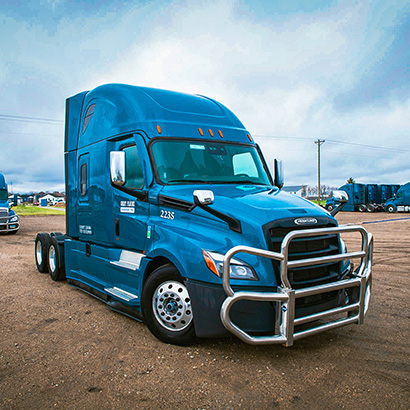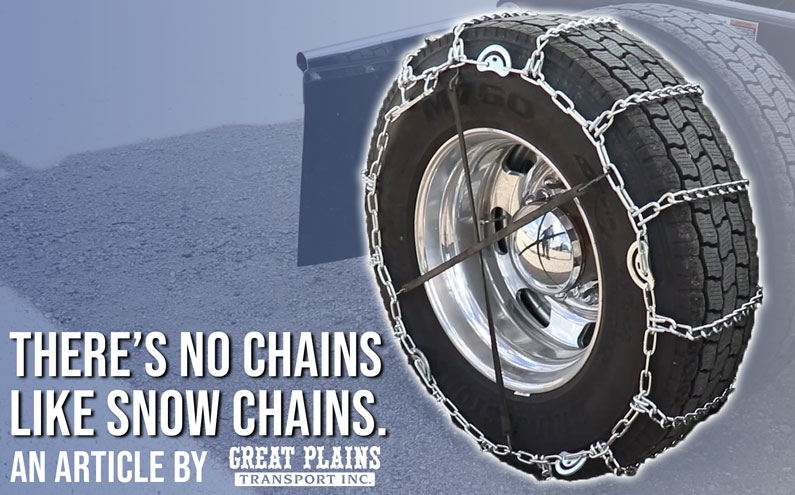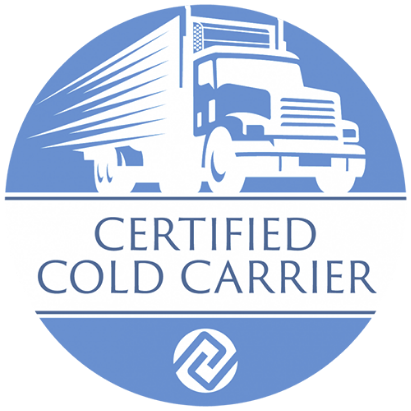Menu
- Home
- Drivers
- Capabilities

logistic experts
- About
- Contact Us
- Get Quote





On average, a semi-truck crash occurs every 15 minutes, resulting in over half a million accidents annually. Additionally, a quarter of all weather-related vehicle accidents are attributed to icy, snowy roads.
With this in mind, it goes without saying how important it is for truck drivers to have ways to avoid adding to these statistics. That’s why Great Plains Transport trucks each come with their own sets of snow-chains. These protect trucks and trailers from slipping and sliding. Several states have their own laws regarding snow-chains, as well as penalties for breaking such laws.
Applying snow-chains may seem like a complicated process; Great Plains has a step-by-step tutorial on our YouTube channel. It makes the process simple and available for all to view!
Here are the steps, which are also explained and demonstrated in the video:
Once this is all accomplished, your truck and trailer will be safe from sliding on the winter roads! See this tutorial on video.

M-F 7AM–5PM

M-F 7AM–5PM
Great Plains Transport is a North Dakota trucking company featuring refrigerated freight, cargo, and dedicated transportation services while offering long haul OTR truck driving jobs in 48 states.
Great Plains Transport Inc
Address: 200 1st Ave SE, Mapleton, ND 58059
Phone: (701) 281-3006

